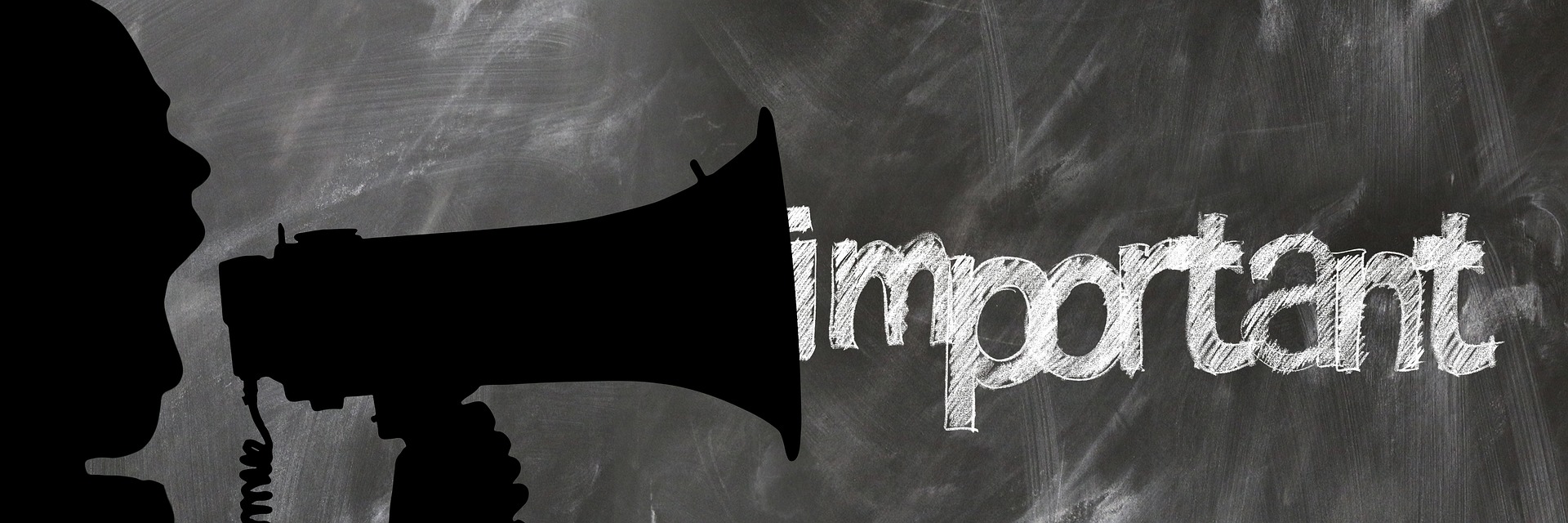Exclamation-point Pixabay by Geralt
As we approach National Suicide Prevention Week, it sometimes feels like a multitude of voices are clamoring for attention with various (and sometimes conflicting) messages. How can we cut through the clutter and be heard? One place where we can learn lessons is from is big business. A recent article by Peter Gasca in Inc. magazine called “Get Your Message Heard With This Simple 5- Step Checklist” offers helpful tips to the suicide prevention community.
The 5-Step Checklist for Effective Messaging
Add Value — does your message improve the lives of those who receive it? Is it helpful? Is there a clear call to action?
Be Clear — does your message get to the point and have a direct call to action? Are you using jargon or acronyms?
Be Concise — does your message use as few words as possible? Better yet — have you considered an infographic to convey your message?
Be Compelling — does your message use urgency, storytelling, humor or something unexpected to get the receiver’s attention? How are you engaging others?
Be Credible — are you trustworthy? Use citations and get your information from highly credible sources.
Recently, with major news coverage of the Netflix series “13 Reasons Why” and celebrity suicide deaths, we are having more conversations about suicide, but are we having the right conversations? Are we telling a more powerful tale? In this episode Dr. Bart Andrews shares his story of deciding to “come out” as a suicide attempt survivor, how he challenges “safe messaging guidelines,” and what he believes are most important suicide prevention messages need to be.
About Dr. Bart Andrews
Bart Andrews, PhD, is Vice President of Telehealth & Home/Community Services at Behavioral Health Response. Dr. Andrews is the Chair of Missouri’s Suicide Prevention Network, Co-Chair of the Suicide Lifeline’s Standards, Training and Practices committee, a member of the Suicide Prevention Resource Center’s (SPRC) Steering Committee, an SPRC ZeroSuicide Academy Faculty member and member of the American Association of Suicidology’s Executive Board of Directors. Dr. Andrews is a suicide attempt survivor and a proponent of embracing of lived expertise in our suicide prevention efforts.
Show Notes
Action Alliance Framework for Successful Messaging about Suicide Prevention: http://suicidepreventionmessaging.org/
Safe and Effective Messaging and Reporting: http://www.sprc.org/keys-success/safe-messaging-reporting
Kevin Hines’ story: https://www.buzzfeed.com/lizzwarner/this-guy-jumped-off-the-golden-gate-bridge-and-survived-to-t?utm_source=dynamic&utm_campaign=bfsharecopy&sub=0_7500357#7500357
DeQuincy Lezine’s story: https://youtu.be/gi7MnK-ml7g
United Suicide Survivors International On-Line Course — Get Ready to Tell Your Lived Experience Story about Suicide: https://unitesurvivors.org/online-education/
Collaborative Assessment and Management of Suicidality (CAMS): https://cams-care.com/about-cams/
Crisis Response Planning: https://crpforsuicide.com/about
Interventions for suicide risk (Zero Suicide): https://zerosuicide.sprc.org/toolkit/treat/interventions-suicide-risk
Caring Contacts: A simple, scalable intervention to reduce suicidal ideation and attempts: https://msrc.fsu.edu/blog/caring-contacts-simple-scalable-intervention-reduce-suicidal-ideation-and-attempts
Suicidal Behavior as own diagnosis: https://www.newscientist.com/article/dn23566-suicidal-behaviour-is-a-disease-psychiatrists-argue/



